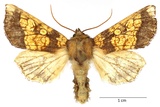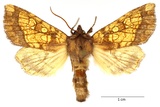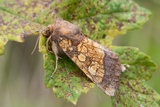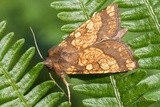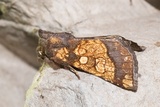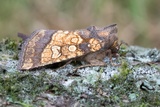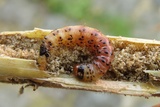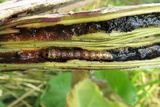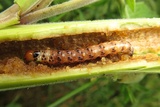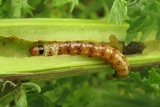Gortyna flavago ([Denis & Schiffermüller], 1775) Species
Last modified: Nov. 19, 2025, 1:48 p.m.
A fairly common species throughout Belgium.
This species is considered Near Threatened according to the IUCN Red List category for Flanders 2023.
Details
- Classification
- Family: Noctuidae > Subfamily: Xyleninae > Tribus: Apameini > Genus: Gortyna > Species: Gortyna flavago
- Vernacular names
- Goudgele boorder (NL), Frosted Orange (EN), Le Drap d'Or, La Noctuelle des Artichauts (FR), Kletteneule (DE)
- Synonyms
- Gortyna ochracea (Hübner, 1786), nec (Scopoli, 1763)
- First mention in Belgium
- De Sélys-Longchamps E. 1857a. Catalogue des Insectes Lépidoptères de la Belgique. — Annales de la Société entomologique belge 1: 1–111. On page 99.
- Status
-
Native
Distribution
Bionomics
Hibernates as an egg. The young larva bores into the fresh stem of the host plant and feeds on the inside. Often the top of the host plant droops or wilts. The caterpillar prepares an exit hole. Sometimes the covering piece of bark falls off before emergence.
Pupation inside the stem, just below the exit hole. The pupa does not protrude the exit hole before emergence.
The adults come to light and to sugar.
Flight periods
The adults fly in one generation a year starting from mid-July till late October.
Observed on
- Host plant (genera):
- Arctium, Carduus, Cirsium, Arctium, Digitalis, Rumex, Eupatorium, Senecio and Ajuga
- Substrates:
- Herbaceous plants
The larva lives in the stem of various herbaceous plants including Carduus, Arctium, Eupatorium, Digitalis, Rumex, Senecio, etc.
